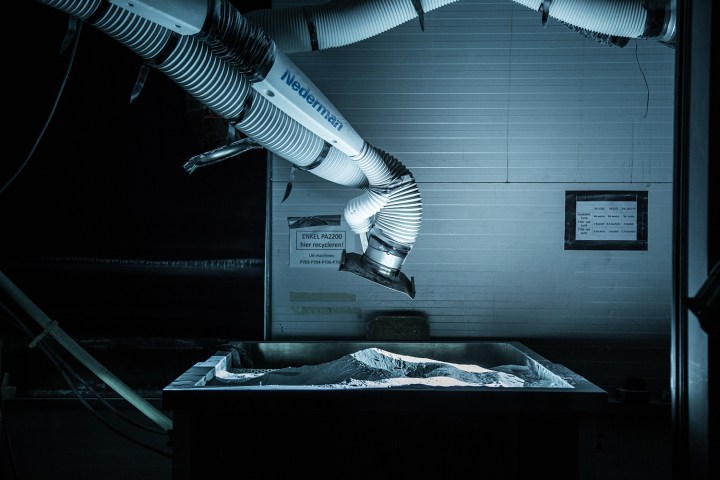
According to reports from Reuters, while there is no specific release date, the Speedfactory will begin producing robot-made running shoes in the first half of 2016. Adidas’s reasoning for the Speedfactory lies in its name: speed. “Our consumers become more challenging and demanding,”Gerd Manz, head of technology innovation at Adidas, said to journalists. “Customization to markets and individuals will become the norm.” According to Manz, 74 percent of Adidas sales are for footwear that is less than a year old, incentivizing the company to invest more in faster production to keep up with the ever-changing demand.
Do not be confused by the pontifications of Kevin Costner in Field of Dreams; you can’t build a speedfactory and expect the robots to come — it’s the other way around. Manz said the company is experimenting with new technologies to color its shoes and bind the materials. Around ten people will be included in the pilot process of the factory, but Adidas plans for full automation in the future. In October, Adidas unveiled the Futurecraft 3D containing a midsole 3D printed to be customized for someone’s specific foot dimensions.
This faster, less human factory would seemingly have severe implications on the 1,100 independent factories which make the bulk of Adidas’ products. But, Manz made sure to clarify the Speedfactory is a “separate business model” and meant to compliment, not replace, existing manufacturers.
This is the latest salvo shot off in the ongoing Cold Tech War between Nike and Adidas. A week after Adidas announced the Futurecraft 3D, Nike was granted a patent for 3D printing shoe strobel. With news of a robot-run factory, Nike will surely have a drone delivery system or robot-run retail store in some sort of future.
Editors' Recommendations
- The best 3D printers under $500
- Wild new 3D printer makes parts by sending titanium particles supersonic
- 3D-printing technique produces tiny, highly detailed objects in seconds
- 3D-printed replica of Michelangelo’s David statue is less than 1mm tall
- 3D-printing system can spit out custom-fitted bionic hands in under 10 hours


